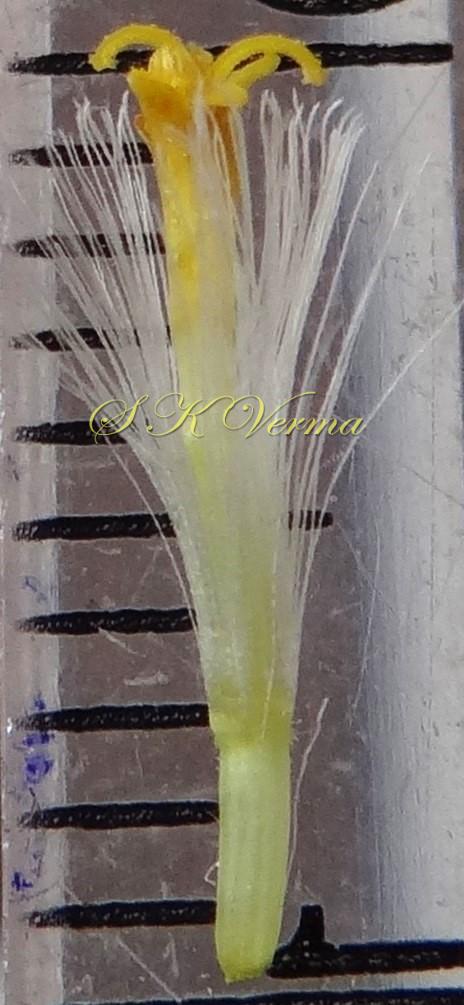SENECIO
Senecio
L., Sp. Pl. 866. 1753; Gen. Pl., ed 5: 373. 1754; Hook. f., Fl. Brit. Ind. 3: 358. 1882; Collett, Fl. Siml. ed. 2: 268. 1921 (Reprint 1980); Chen et al., Fl. China @ eFloras.org 20-21: 508; Berkley, Fl. North Amer. @eFloras.org 20: 540
Erect herbs, sometimes shrubs, small trees, lianas, decumbent or twiners. Leaves alternate or all basal, entire to variously dissected. Heads radiate, sometimes discoid in corymbs or short racemes forming panicles, rarely solitary. Involucre usually with a single row of phyllaries subtended by a small calyculus of much smaller bracts; phyllaries free or rarely connate with membranous or scarious margin. Receptacle flat or convex. Disc florets: Perfect and fertile. Corolla tubular, 5- toothed. Ray florets: Pistillate and fertile, yellow to orange, occasionally reddish. Ligules short or long, entire or toothed. Anthers ecaudate, obtuse or sagittate at base, appendiculate at apex. Style arms flattened, truncate, penicellate. Cypselae nearly cylindric, ribbed, ribs 5-10. Pappus of numerous, usually white, entire or rarely barbellulate capillary bristles.
1462 species
Senecio macroglossus
Senecio macroglossus
DC., Prodr. 6: 404. 1838.
Perennial, much branched climber; branches purple, thin, flexible, glabrous. Leaves alternate, simple, exstipulate; petiole +/- 3.5 cm long, green tinged purple, glabrous; lamina +/- 5.5 cm x 4.5 cm, ivy-like, 3-5-lobed, central lobe largest, lobes triangular, entire, apex acute or acuminate, glabrous, shining, palmately veined at base, pinnately veined above, veins inconspicuous adaxially, primary veins grooved abaxially. Capitula radiate, ca. 3.5 cm across, pale-yellow, solitary axillary on up to 5 cm long glabrous, sometimes pubescent, peduncle. Involucre cup-shaped, ca. 1 cm long, phyllaries 10-15, uniseriate, oblong-lanceolate, acute to acuminate, connate at base, margin membranous. Involucre subtended by small calyculus with +/- 10 free, lanceolate calycular bracts, 7-10 mm x 2 mm, in one or 2 series; calyculus continuous below on peduncle with few scattered bracts. Receptacle flat, naked. Ray florets: Female, 9-10. Ligule strap-shaped, spreading, pale-yellow, 1.4 cm x 6 mm, 3-toothed; corolla tube ca. 6 mm long. Ovary ca. 3 mm long, cylindrical, slightly pubescent in upper part; style 6 mm long, style arms 2, flattened. Pappus copious, hairy, barbellate, white, soft, as long as corolla tube. Disc florets: Many, up to 70, ca. 1 cm long, bisexual. Corolla funnelform, ca. 6 mm long, limb 5-lobed, lobes 1-1.5 mm x 0.5-0.6 mm, lanceolate, subacute, pale-yellow. Stamens 5, epipetalous. Pistil and pappus as in ray florets. Cypselae 2.5-3 mm long, nearly cylindric, ribbed, glabrous, light brown.
Common Names: Cape Ivy, Wax Vine, Natal Ivy, Marguerite Ivy, Climbing Senecio
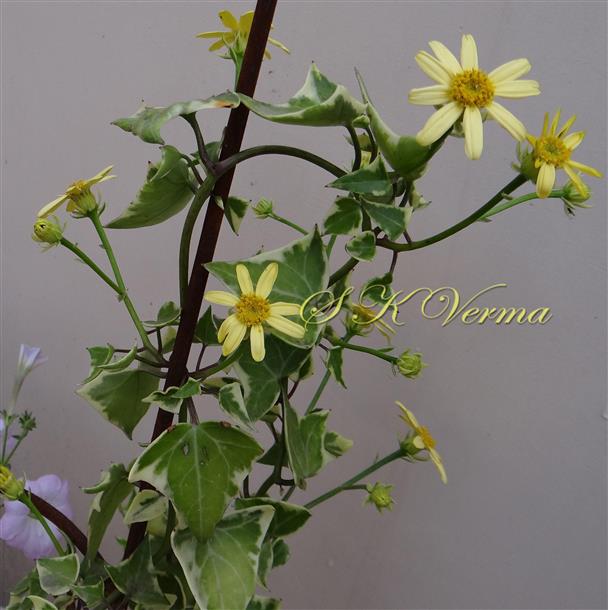
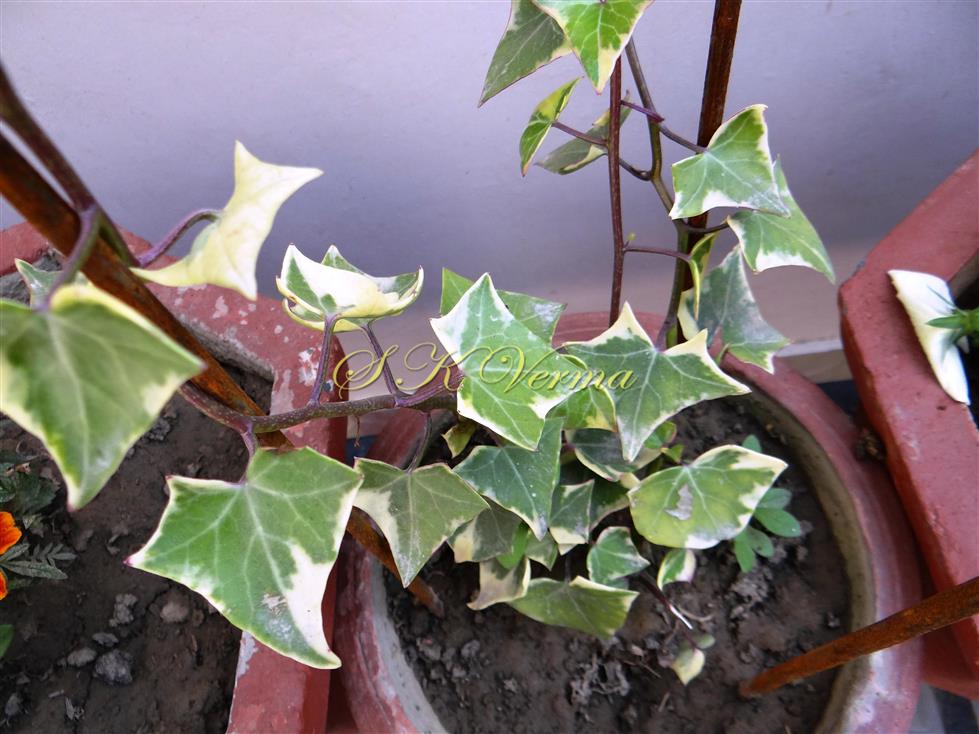
-DSC06547.jpg)
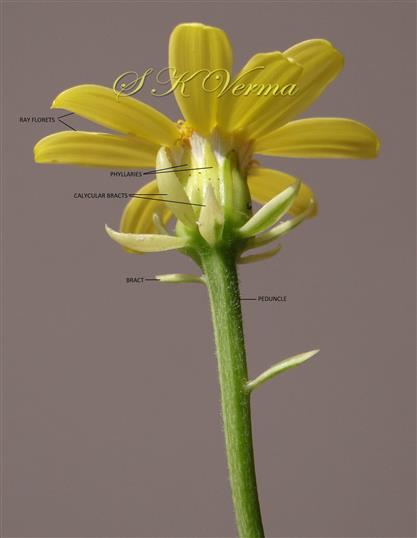
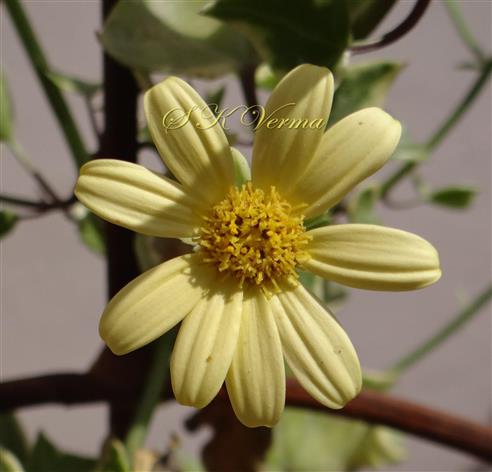
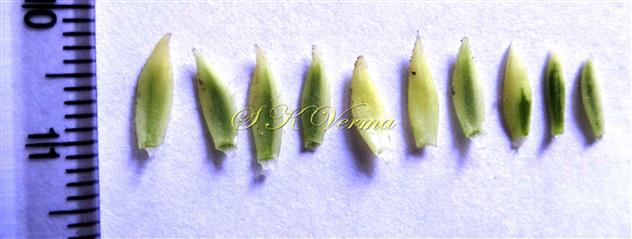
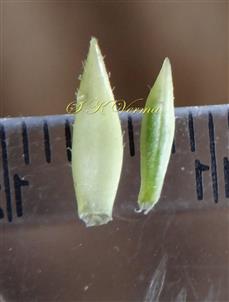
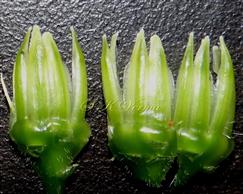
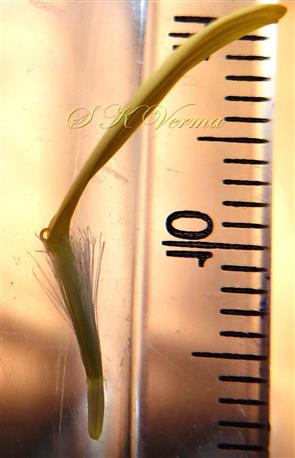
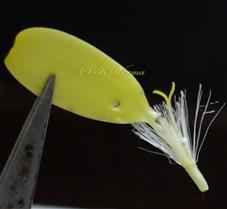
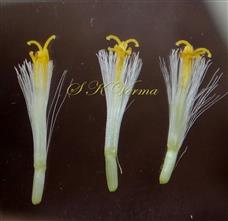

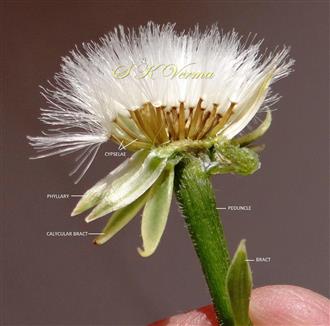
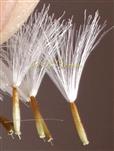



-DSC06547.jpg)








